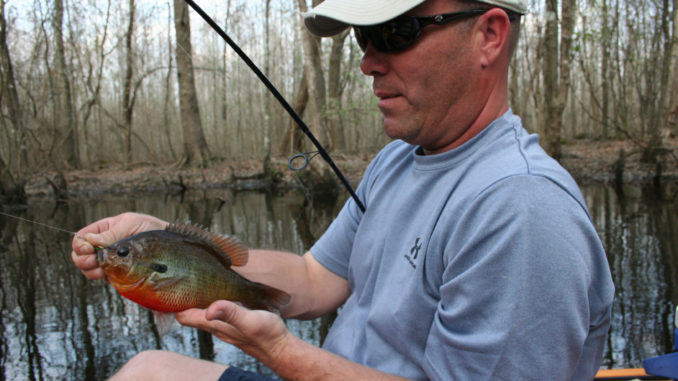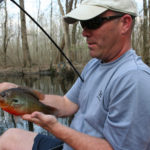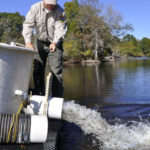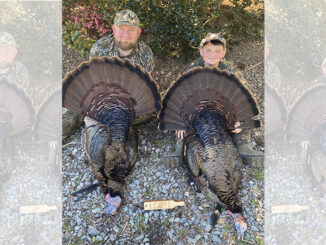
Little Pee Dee, Waccamaw rivers also part of huge stocking program, SCDNR says.
The South Carolina Department of Natural Resources has been stocking redbreast sunfish in the Edisto River every year since 1995, and they continued those efforts in early November by releasing 400,000 fry to push the 2011 total to 1.5 million. That is slightly more than average.
Redbreast sunfish have been the No. 1 gamefish on the Edisto River for decades, in terms of angler desire, effort and numbers caught. But since the early 1990s, SCDNR biologists have noticed a decline in redbreast numbers, as several factors began to stack up against the brightly colored sunfish with the long “ear.”
According to many local anglers, the introduction of the flathead catfish is the top reason for the redbreast’s dwindling numbers. Fisheries biologist Chris Thomason disagrees — sort of.
“The flathead catfish, which is not native to South Carolina, is one of the reasons redbreast numbers are down, but it’s not the only reason,” Thomason said. “South Carolina has had drought conditions for 10 out of the last 12 years. This has lead to habitat change that has also taken a heavy toll on the redbreast.”
The U.S. Fish and Wildlife Service’s hatchery in Orangeburg has been helping by raising fry from redbreast brood fish that are native to the Edisto River.
Just as many blame flathead catfish, many folks believe the solution is simply backing up the stocking truck and dumping out some redbreast.
Jean Leitner, another SCDNR fisheries biologist, said it isn’t that simple.
“A lot of people think the stocking truck is the answer, but we really don’t know to what extent that has helped, if at all,” Leitner said.
Thomason agrees, pointing out that the agency is conducting studies to determine how helpful their stocking has been. Last year, the agency began marking redbreast fry at the hatchery with oxytetracycline (OTC).
In addition to stocking this year, SCDNR is also collecting redbreast from the Edisto for sampling purposes – fingerlings will reach catchable size within a year. At the lab, they check for the presence of OTC to determine how many of the sampled fish are stocked redbreast.
This data will be collected over several years to give SCDNR an estimate of what contribution their stocking efforts are having.
Thomason and Leitner are excited about the new study, saying it’s one thing to dump fish in the river every year but quite another to actually see what impact those actions are having.
“Other Southeastern states have the same problem with their redbreast populations, but we are the first to study the effects of stocking, so hopefully our data will help other states too,” Thomason said.
The Edisto isn’t the only river with a dwindling redbreast population. The Little Pee Dee and the Waccamaw also have suffered from drought and the spread of flathead catfish, and both waterways are getting help from the SCNDR stocking truck.
The Little Pee Dee received more than 500,000 redbreast fingerlings in October and November. Gallivants Ferry was one stocking location, and four other spots were used to spread the tiny fish around.
The Waccamaw is scheduled for a heavy dose of stocking in the spring of 2012.
While the OTC studies are only being conducted on the Edisto, the results should give biologists a good view of how the stockings are affecting all three rivers.
Stocking efforts are funded through the Johnson-Dingle Act, a federal excise tax on fishing tackle.






